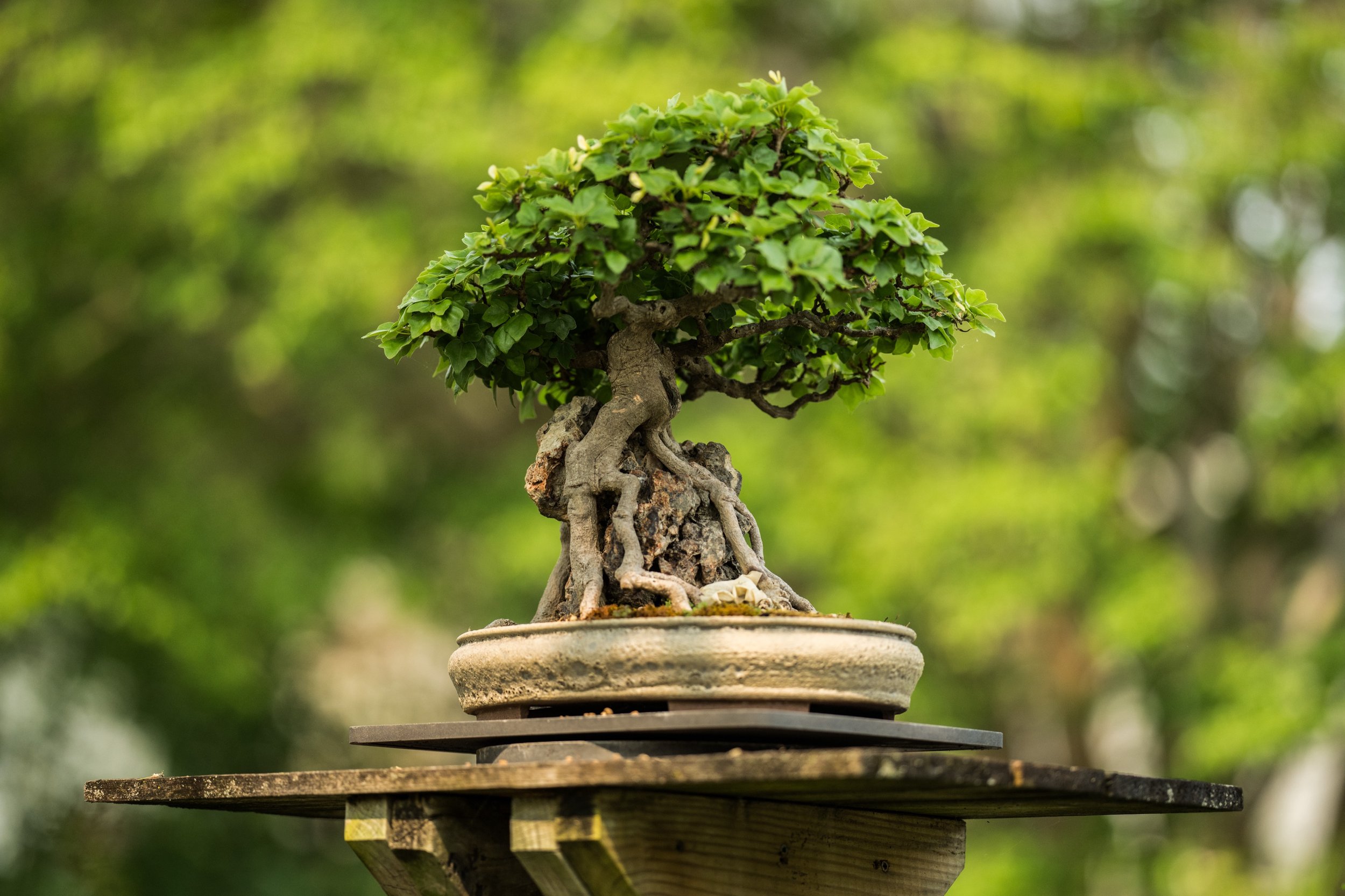Harkaway pruning a deciduous pre-bonsai
The National Bonsai Foundation’s Board of Directors is full of people from different professional backgrounds that find common ground through their love of bonsai. In this episode of The Bonsai Board, you’ll get to know Dr. Karen Harkaway – a talented doctor and bonsai practitioner.
With degrees from Duke University and the University of Pennsylvania Medical School, Harkaway currently practices medical and aesthetic dermatology in New Jersey.
She is the Chief of Dermatology at Lourdes Medical Center of Burlington, a fellow of both the American Academy of Dermatology and the American Society of Dermatologic Surgery, serves on the Clinical Advisory Council of ThermiAesthetics and has aided in developing a successful skin-tightening procedure.
Despite not growing up with a horticulture or tree-oriented background, Harkaway had always been drawn to the exhibits the Pennsylvania Bonsai Society constructed at the Philadelphia Flower Show each year. Intrigued by the bonsai, she bought a mallsai – or a more commercial, less formal “starter” bonsai – while in medical school and reconnected with the art on a deeper level later in life. Harkaway said she has had to study the horticultural aspects of bonsai, but she’s naturally drawn to the artistic element of training and designing trees.
“I do certainly love plants, but I’ve learned to appreciate trees from my love of bonsai rather than the typical path of loving trees then bonsai,” she said. “It’s such a cool interplay because it’s not just an art, but there’s a living aspect to it.”
Harkaway’s passion within dermatology is largely aesthetic construction, which also requires the fusion of an artistic eye with the biology and scientific knowledge of Botox, fillers and lasers.
“If you know horticulture, you’ll do a great job of keeping your trees alive, but it’s the addition of creativity that makes a great bonsai,” she said. “You have to be facile with both aspects in my business as well, so it’s fun to have that correlation between my professional life and my hobby.”
Harakaway has honed her bonsai skills with the guidance of prominent artists from around the globe, from Chase Rosade in America to Mauro Stemberger from Italy. She has hosted Ryan Neil of Bonsai Mirai at her home to lead mini-seminars on the art of bonsai. Harkaway’s award-winning trees have been displayed at the Pennsylvania Flower Show, the Mid-Atlantic Bonsai Societies’ exhibition and the Second U.S. National Bonsai Exhibition.
Harkawaway’s crape myrtle in full autumn display
She was first introduced to the National Bonsai & Penjing Museum through friends like the Rosade family and instantly connected with the compelling story of the Museum’s conception and purpose.
“The Museum is such an American treasure,” Harkaway said. “People think of it as something that resides in D.C., but it was initiated as and has continued to be such a tremendous gift to all American people that I feel it’s very important that we continue to spread that word and have that inclusivity of understanding and recognizing the importance of these trees in our culture.”
Once hooked into the art of bonsai, she became increasingly involved with some of the biggest bonsai groups in the United States: Harkaway served as president of the American Bonsai Society and on the board Pennsylvania Bonsai Society, and she is actively involved with the Bonsai Society of South Jersey – in addition to serving as a member of the NBF Board of Directors.
“It’s been great to get to know the people who are involved and the work that’s being done at NBF and the work that needs to be done,” she said. “I became much more aware of the need for the ongoing support for the Museum itself, the physical structure and bonsai in general. The camaraderie you feel as part of the group is a wonderful aspect of being a member of the NBF board.”












